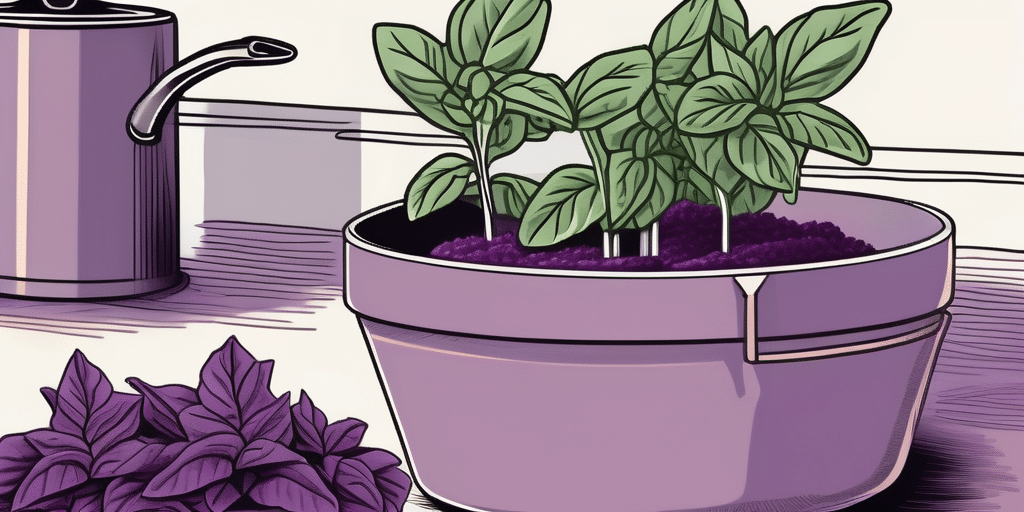Are you a gardening enthusiast looking to add a fragrant and flavorful herb to your garden? Or perhaps you’re a culinary aficionado wanting to have fresh basil at your fingertips? Growing basil from seed is an easy and rewarding endeavor that can be accomplished by gardeners of all skill levels. Let’s delve into the details of how to successfully grow this aromatic herb.
Understanding Basil: An Overview
Basil, scientifically known as Ocimum basilicum, is a culinary herb that is a member of the mint family. It is native to tropical regions in central Africa and Southeast Asia, but it has been cultivated around the world for its aromatic leaves.
There are several varieties of basil, each with its unique flavor profile and growth characteristics. Some popular varieties include sweet basil, Thai basil, and purple basil. Regardless of the variety, all basil plants share some common growth requirements.
Climate and Growing Conditions
Basil is a warm-weather plant that thrives in sunny conditions with temperatures between 70 and 80 degrees Fahrenheit. According to the USDA, basil is a frost-sensitive plant, and exposure to temperatures below 50 degrees can damage the plant.
When it comes to soil, basil prefers well-draining soil with a pH between 6.0 and 7.0. It’s also a good idea to enrich the soil with organic matter or compost to provide the necessary nutrients for the plant’s growth.
How to Grow Basil from Seed
Now that we’ve covered the basics of basil and its growing conditions, let’s get into the step-by-step process of growing basil from seed.
- Start by choosing the right variety of basil seeds. Consider your culinary needs and the growing conditions in your area.
- Prepare your soil by ensuring it is well-draining and has a pH between 6.0 and 7.0. You can test your soil’s pH using a soil pH tester.
- Sow the basil seeds directly into the garden or in pots. The seeds should be planted about 1/4 inch deep and spaced about 10 to 12 inches apart.
- Water the seeds gently but thoroughly. The soil should be kept moist but not waterlogged.
- Place the pots or garden in a location that receives at least six hours of sunlight each day.
- Germination should occur within 5 to 10 days. Once the seedlings have two sets of true leaves, thin them to about 6 inches apart to allow for proper growth.
Caring for Your Basil Plants
Once your basil plants have sprouted, they will need regular care to ensure healthy growth. This includes regular watering, fertilizing, and pruning.
Basil plants prefer soil that is consistently moist, but not waterlogged. Water your plants regularly, especially during dry spells. Overwatering can lead to root rot, so it’s important to ensure your soil drains well.
Fertilizing your basil plants can help promote lush, healthy growth. Use a balanced, organic fertilizer and follow the package instructions for application rates.
Pruning your basil plants is also important. Regularly pinching off the tips of the plants can encourage bushier growth and prevent the plant from flowering, which can affect the flavor of the leaves.
Harvesting and Storing Basil
One of the joys of growing basil is harvesting the fresh, fragrant leaves. But when is the right time to harvest, and how should you store your basil?
When to Harvest Basil
The best time to harvest basil is in the morning, after the dew has dried but before the heat of the day. This is when the leaves are at their most flavorful.
Harvest basil leaves as needed throughout the growing season. Regular harvesting can actually promote more growth. However, avoid harvesting more than one-third of the plant at a time to prevent stressing the plant.
How to Store Basil
There are several ways to store basil. Fresh basil can be stored in the refrigerator for a short period of time, but for longer storage, consider drying or freezing the leaves.
- Refrigerating: Place fresh basil leaves in a plastic bag and store in the refrigerator. Use within a week for the best flavor.
- Drying: Hang bunches of basil upside down in a warm, dry place. Once the leaves are completely dry, store them in an airtight container.
- Freezing: Freeze whole basil leaves in a single layer on a baking sheet. Once frozen, transfer the leaves to a freezer-safe bag or container. You can also puree basil leaves with a little water or oil and freeze the mixture in ice cube trays for easy use in recipes.
Common Pests and Problems
Like any plant, basil can be susceptible to pests and diseases. Here are some common issues and how to deal with them.
Pests
Common pests that can affect basil plants include aphids, whiteflies, and slugs. These pests can be controlled with organic insecticides or by encouraging beneficial insects that prey on these pests.
Diseases
Basil can be affected by various diseases, including fusarium wilt, downy mildew, and root rot. These diseases can often be prevented by practicing good sanitation, rotating crops, and ensuring proper watering practices.
With this comprehensive guide, you’re now equipped with the knowledge to successfully grow basil from seed. Whether you’re a seasoned gardener or a beginner, growing basil can be a rewarding experience that adds flavor and fragrance to your garden and your kitchen.
Join Our Green-Thumbed Community!
Ready to transform your basil-growing journey into a full-blown garden adventure? Subscribe for free to How to Grow Everything and learn how to build the garden of your dreams! Receive personalized gardening advice tailored to your location, grow zone, and experience level. Enjoy the best gardening tips, special offers, and deals delivered straight to your inbox—100% free, with no spam, just valuable insights from our family to yours. Embark on your gardening quest with us today!

